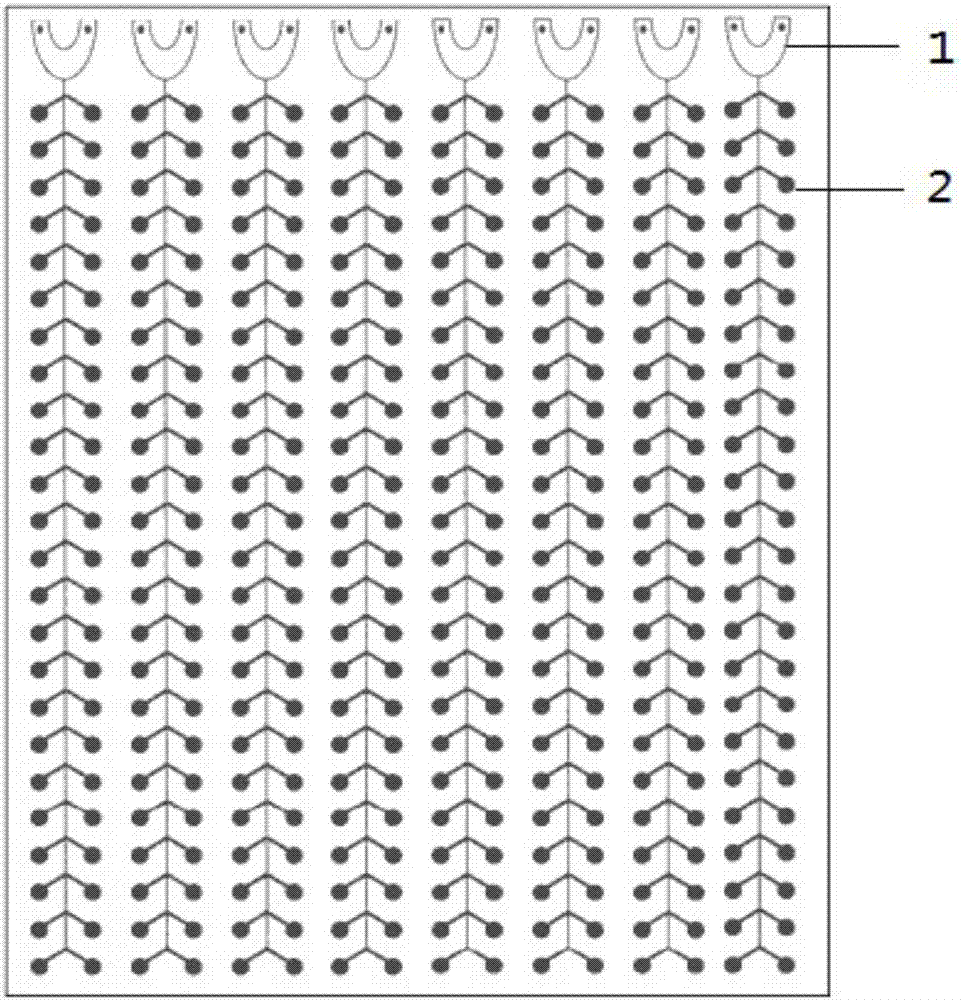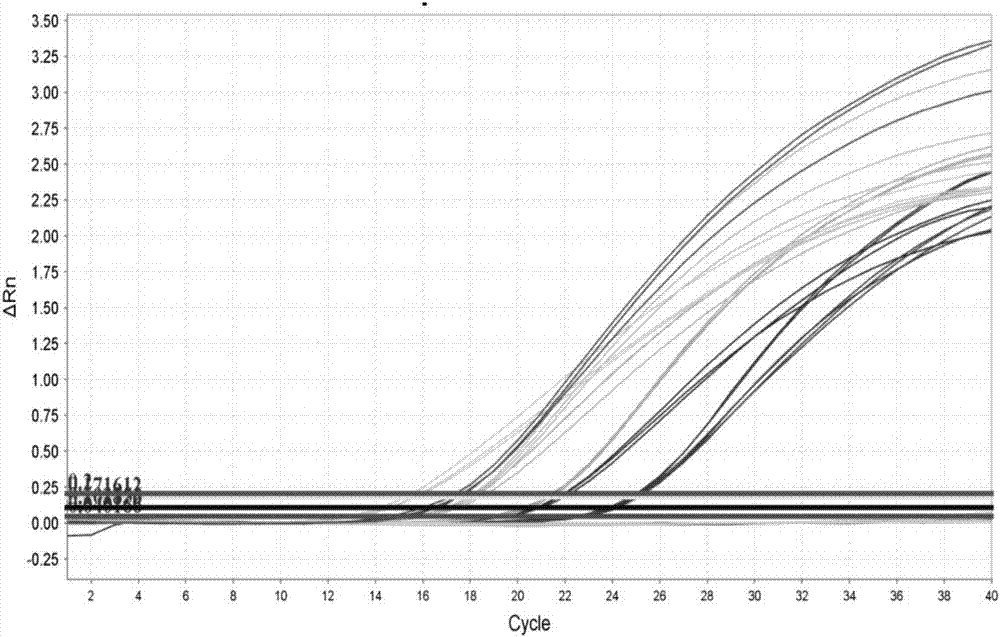Gene microfluidic chip for detecting 26 animal-derived components at same time and application thereof
A technology of animal-derived components and microfluidic chips, applied in bioreactor/fermenter combinations, specific-purpose bioreactor/fermenter, biomass post-processing, etc., can solve the problem that probes are susceptible to environmental interference, reduce Sensitivity and specificity, unfavorable long-term storage and other issues, to achieve high species conservation, increase throughput, and high inter-species specificity
- Summary
- Abstract
- Description
- Claims
- Application Information
AI Technical Summary
Problems solved by technology
Method used
Image
Examples
Embodiment 1
[0034] The design of embodiment 1 primer and the preparation of gene microfluidic chip
[0035] Primer-probe design is performed in three steps:
[0036] 1. For 26 kinds of animals: pig, cow, sheep, goat, chicken, duck, cat, mouse, dog, turkey, deer, pigeon, fox, mink, camel, ostrich, rabbit, goose, roe deer, horse, quail , grass carp, salmon, perch, rainbow trout and crucian carp, select COX1, ND1, ND2, 16S and other genes on the mitochondria as target genes, design primers through primer and probe analysis software, and effectively screen out the genes that can be obtained under the same reaction conditions on the chip. Primer probes with good amplification efficiency. The obtained candidate probes need to be analyzed by BLAST on NCBI, and the probes with the best specificity between species are selected for chip design. The present invention has designed 32 pairs of primers and corresponding Taqman probes, the nucleotide sequences of which are shown in SEQ ID NO.1-96 resp...
Embodiment 2
[0042] Example 2 Establishment of a method for detecting 26 kinds of animal-derived components using the gene microfluidic chip prepared in Example 1
[0043] 1. Extract sample DNA
[0044] (1) Take 26 kinds of animals (pig, cow, sheep, goat, chicken, duck, cat, mouse, dog, turkey, deer, pigeon, fox, mink, camel, ostrich, rabbit, goose, roe deer, horse , quail, grass carp, salmon, perch, rainbow trout and crucian carp) muscle sample 0.2g, cut as much as possible. Place in a 1.5ml centrifuge tube, add 1ml of cell lysis buffer, 20μl proteinase K (500μg / ml), and mix well. Water-bath in a constant temperature water bath at 65°C for 30 minutes, and shake the centrifuge tube several times intermittently. Centrifuge at 12,000 rpm for 5 minutes in a tabletop centrifuge, and transfer the supernatant to another centrifuge tube.
[0045] (2) Add an equal volume of phenol:chloroform mixture (1:1), shake and mix, and centrifuge at 12,000rpm for 10min.
[0046] (3) Take the supernatant ...
Embodiment 3
[0068] Embodiment 3 specificity test
[0069] Adopt the method of embodiment 2 to detect above-mentioned 26 species and rat, Chinese grass shrimp, grouper genomic DNA, its experimental result is: the Ct value of positive quality control is 24.54, the Ct value of positive internal reference is 25.49, 26 The CT values of each species are all less than 30, and the Ct values of rat, grass shrimp and grouper are all greater than 30. This experiment proves that the gene microfluidic chip of the present invention has good species specificity.
PUM
 Login to View More
Login to View More Abstract
Description
Claims
Application Information
 Login to View More
Login to View More - R&D
- Intellectual Property
- Life Sciences
- Materials
- Tech Scout
- Unparalleled Data Quality
- Higher Quality Content
- 60% Fewer Hallucinations
Browse by: Latest US Patents, China's latest patents, Technical Efficacy Thesaurus, Application Domain, Technology Topic, Popular Technical Reports.
© 2025 PatSnap. All rights reserved.Legal|Privacy policy|Modern Slavery Act Transparency Statement|Sitemap|About US| Contact US: help@patsnap.com



